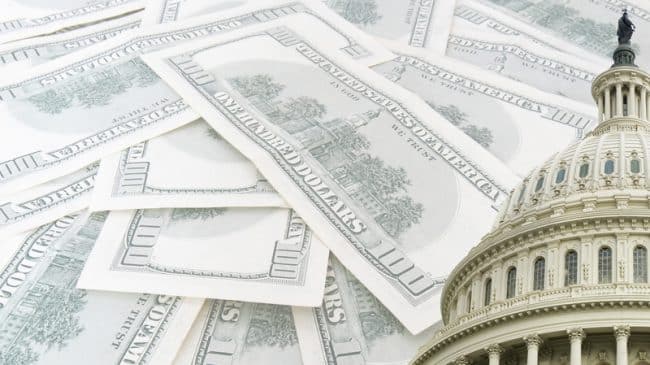Previous: 15. General > Taxpayer’s Guide
>> Conclusion
The American Recovery and Reinvestment Act largely just provides general funds to government agency budgets, bloating the already large bureaucracy. The stimulus bill does not focus on fiscal responsibility, but rather makes the government even larger, funding many untested programs that could significantly add to government waste. From funding the War on Drugs to Comparative Effectiveness Research, the policy implications of the stimulus spending will leave a permanent stamp on the future of the American economy and society.
To follow the progress of stimulus spending, visit Onvia’s Recovery.org “Tracking Recovery” website and check out all of Reason’s coverage of stimulus and bailout spending.
>> New Spending
A significant portion of the money in stimulus was directed towards expanding the size of government by over $97 billion. This money creates 30 new programs that dramatically increase the role of government in the lives of individuals and operations of businesses. The new programs are 18 percent of the spending in the stimulus bill. These programs largely focus on increasing government funding of energy related projects and providing social services, with $16.1 billion being given to energy projects.
The unfortunate thing is that the spending won’t be limited to just this money. Those energy projects never existed before and won’t be over within one or two years. In this way the government has committed itself to long-term funding of billions of dollars worth of projects and programs. That’s $16.1 billion that will be needed from the next budget and the budget after that for years to come.
Here is a list of the stimulus bill’s newly proposed, or previously unfunded, programs and their costs:
- Grants to stabilize state education funds ($40.6 billion)
- Grant programs to fund state and local social services ($8 billion)
- High-speed intercity-rail ($8 billion)
- Energy Innovative Technology Loan Guarantee Program ($6 billion)
- Grant program to give bonuses to successful schools ($5 billion)
- Smart grid program ($4.5 billion)
- Wireless broadband technology program ($4.35 billion)
- Grant program for energy efficiency and conservation ($3.2 billion)
- Grants for low-income housing tax credit ($2.25 billion)
- Sec. 8 Housing energy efficiency homeowners program ($2.25 billion)
- Advanced battery manufacturing grants ($2 billion)
- Implementing “Health Information Technology” ($2 billion)
- Grants for improving the national highway system ($1.5 billion)
- Grant for youth summer jobs program ($1.2 billion)
- “Comparative Effectiveness Research” ($1.1 billion)
- “Preventative Wellness Trust” ($1 billion)
- Green job training grants ($750 million)
- Subsidies for SBA direct and guaranteed loans ($636 million)
- Grants for Amtrak security initiative ($450 million)
- Grant for “Advanced Research Project Agency,” energy division ($400 million)
- Grants for emissions reduction program ($400 million)
- Rural broadband technology opportunities program ($350 million)
- Federal vehicle fleet replacement ($300 million)
- “Clean Cities Program” ($300 million)
- FEMA grants for fire departments ($210 million)
- NSF grants for research facilities modernization ($200 million)
- Impact Aid school construction ($100 million)
- Agriculture Department after school feeding program ($100 million)
- Upgrade initiative for visa processing facilities ($90 million)
- Funding for the Recovery and Accountability Board ($84 million)
Total: $97,320,000,000
Previous: 15. General > Taxpayer’s Guide
Written by: Anthony Randazzo. Please email with any comments or corrections.
